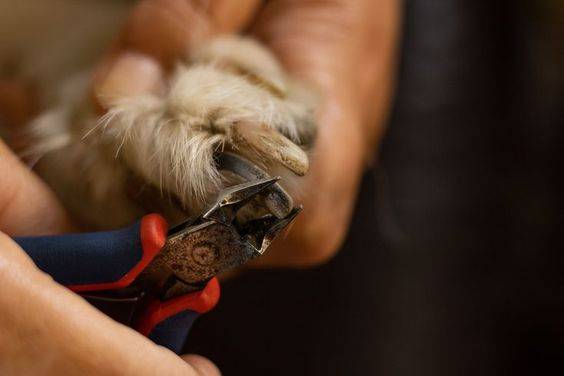Training a deaf dog can seem daunting at first, but it is entirely possible and highly rewarding. Deaf dogs are just as capable of learning commands and developing a strong bond with their owners as hearing dogs. This comprehensive guide will cover everything you need to know about training a deaf dog, including understanding their unique needs, utilizing effective communication methods, and creating a safe and supportive environment.
Understanding Deaf Dog
Causes of Deafness in Dogs
- Genetics: Certain breeds are more predisposed to congenital deafness, such as Dalmatians, Australian Shepherds, and Jack Russell Terriers.
- Age: Like humans, dogs can lose their hearing as they age.
- Injury or Illness: Ear infections, head trauma, or certain medications can lead to deafness.
- Noise Exposure: Prolonged exposure to loud noises can damage a dog’s hearing over time.
Identifying Deafness in Your Dog
- Lack of response to sounds: Not reacting to their name, squeaky toys, or loud noises.
- Excessive barking: Some deaf dogs bark more because they can’t hear themselves.
- Difficulty waking up: Sleeping through loud noises or being startled when woken.
A veterinarian can perform tests to confirm if your dog is deaf and to what extent.
Training Techniques for Deaf Dogs
Positive Reinforcement
Positive reinforcement involves rewarding desired behaviors to encourage them to repeat those actions.
- Treats: Small, tasty treats can be very motivating.
- Praise: Physical affection and enthusiastic body language can convey approval.
- Toys: Playtime with favorite toys can also be a great reward.
Visual Signals
Since deaf dogs can’t hear verbal commands, visual signals become crucial.
- Hand Signals: Develop clear, consistent hand signals for each command. Common signals include:
- Sit: A downward motion with your hand.
- Stay: An open palm facing the dog.
- Come: Waving your hand towards yourself.
- Good: Thumbs up.
- No: Wagging your finger or using a specific gesture.
- Body Language: Dogs are naturally adept at reading body language. Use your posture and facial expressions to communicate with your dog.
- Lights: Flashing a light on and off can be used as a cue, especially useful at night or in low-light conditions.
- Vibrations: Stomping on the floor or using a vibration collar can help get your dog’s attention.
Creating a Training Plan
- Start with Basic Commands: Use hand signals consistently and pair them with rewards.
- Use a Clicker or Marker: A visual marker like a flashlight can substitute a clicker. Flash the light to mark the exact moment your dog performs the desired behavior, followed by a reward.
- Training Sessions: Keep training sessions short and positive.
- Gradual Increase in Complexity: Once your dog masters basic commands, gradually introduce more complex behaviors and tricks.
Addressing Behavioral Issues
Deaf dogs can develop behavioral issues if they feel isolated or frustrated. Here are some tips to manage and prevent these problems:
Socialization
Early and consistent socialization is crucial for deaf dogs.
- Controlled Settings: Start in controlled, safe environments before moving to more stimulating ones.
- Positive Experiences: Ensure each interaction is positive.
- Observation: Watch for signs of stress or fear. If your dog shows signs of being overwhelmed, take a step back and reintroduce the stimulus gradually.
Preventing Startle Reactions
Deaf dogs can be easily startled, which can lead to fear or aggression. Here’s how to minimize this risk:
- Approach from the Front: Always approach your dog from the front or the side where they can see you.
- Gentle Touch: Use a gentle touch to wake your dog instead of startling them.
- Visual Signals: Train your dog to recognize a visual signal (like a light or a hand wave) as a cue to look at you before you approach them.
Safety Tips for Deaf Dogs
Keeping a deaf dog safe requires some additional considerations:
Identification
- Collar Tags: Ensure your dog’s collar has an identification tag that indicates they are deaf.
- Microchipping: Microchip your dog in case they get lost.
Fenced Yard
- Secure Fencing: Make sure your yard is securely fenced to prevent your dog from wandering off.
- Supervision: Always supervise your dog when they are outside, especially in unfenced areas.
Leash Training
- Leash Use: Always keep your dog on a leash during walks. Deaf dogs can’t hear dangers like approaching cars or other animals.
- Harness: Use a harness instead of a collar to prevent neck injuries.
Building a Strong Bond
Building a strong bond with your deaf dog is crucial for successful training and a happy relationship. Here are some tips:
Inference
Training a deaf dog requires patience, consistency, and a willingness to adapt traditional training methods. By understanding their unique needs and utilizing effective communication techniques, you can build a strong bond and ensure your deaf dog leads a happy, fulfilling life. Remember, deaf dogs are just as capable and loving as any other dog, and with the right approach, they can excel in training and be wonderful companions.
By following the tips and strategies outlined in this guide, you’ll be well on your way to successfully training your deaf dog and creating a positive, enriching environment for them to thrive in.







